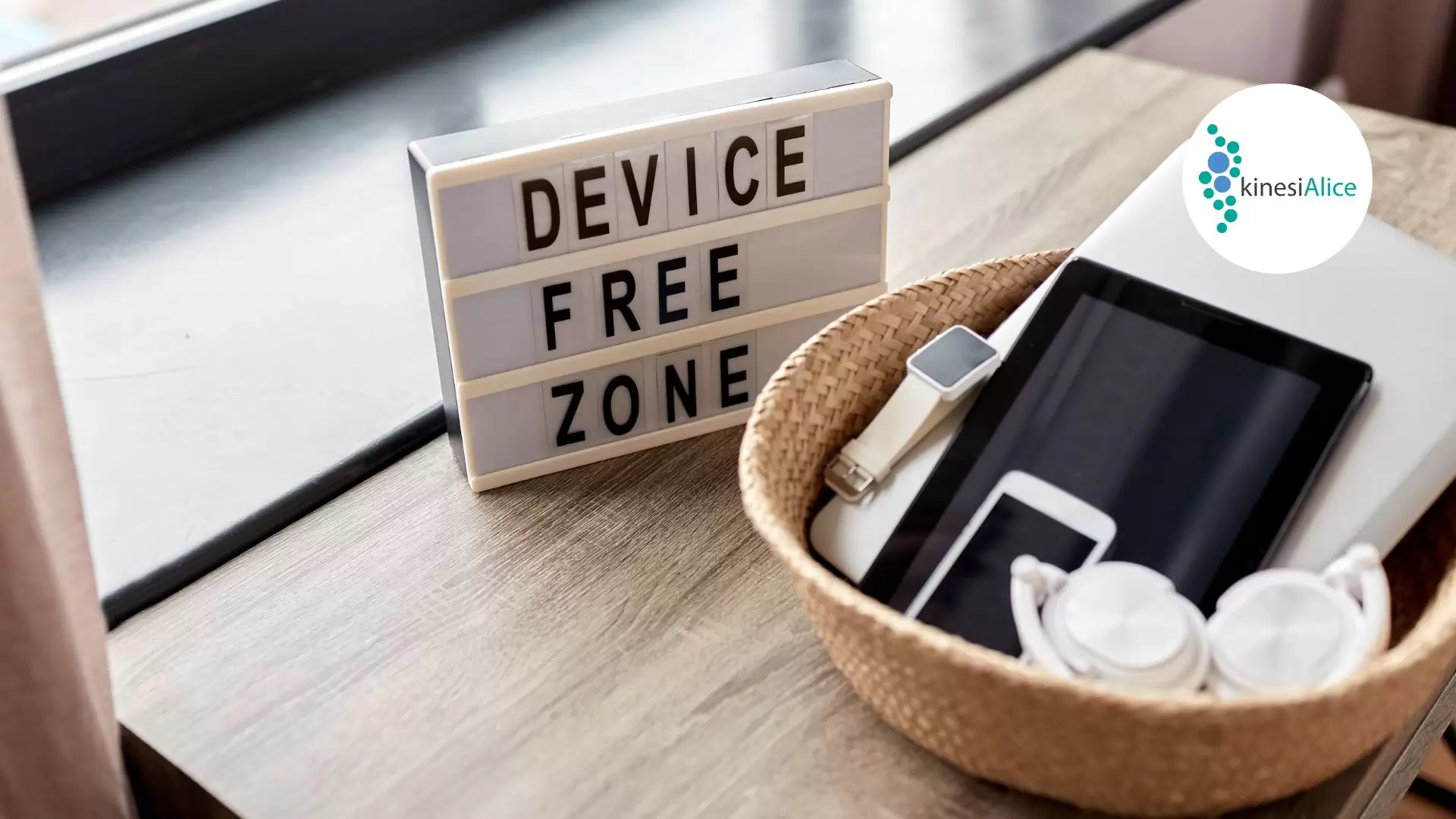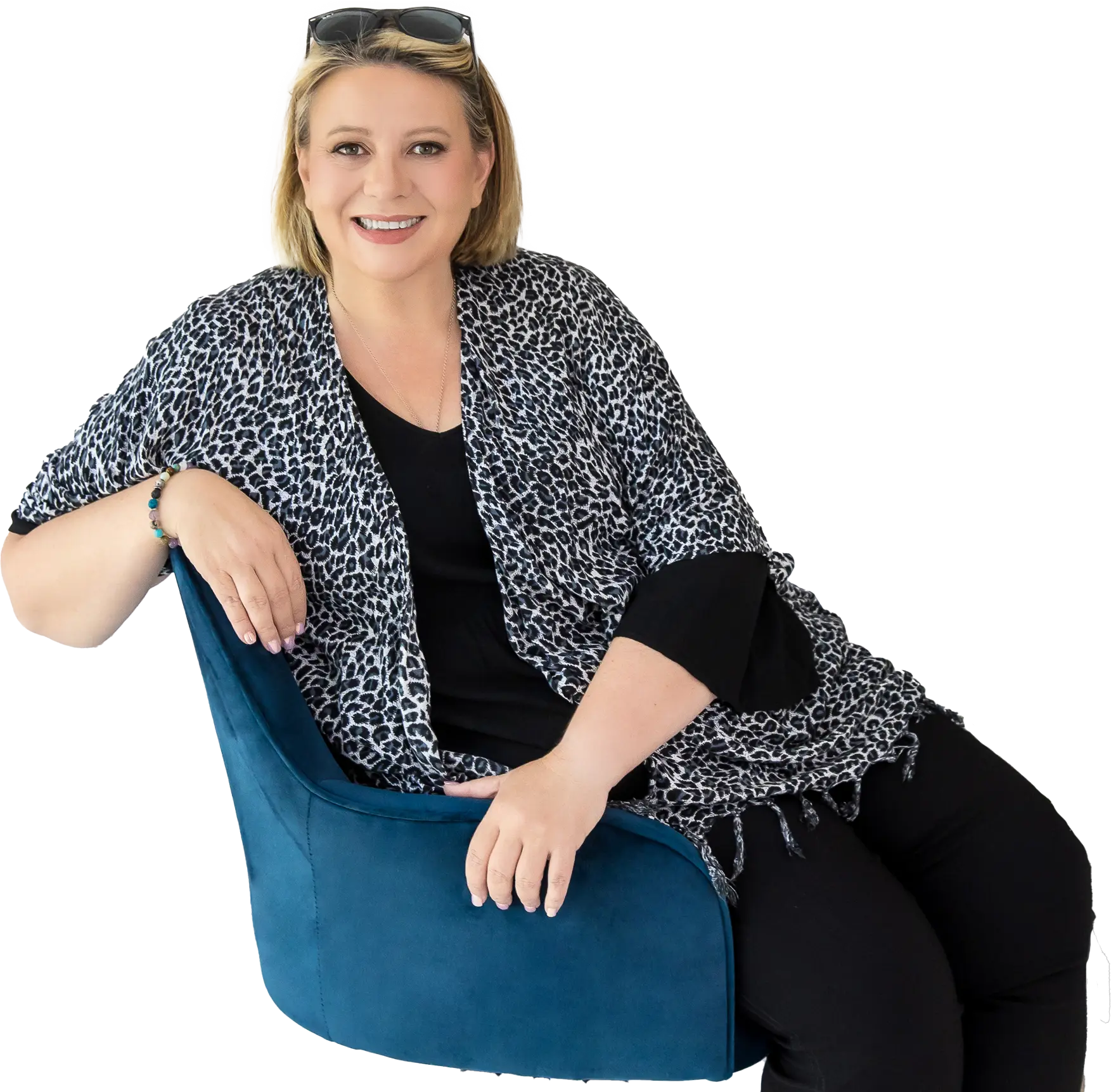Today, technology is woven into every corner of our lives. We scroll through news feeds before we even get out of bed. Our work, communication, entertainment, and even relaxation often revolve around screens. And while technology certainly has its advantages – connection, convenience, efficiency – it’s also quietly taking a toll on our health and happiness.

If you’ve been feeling wired, tired, scattered or just not quite yourself, it might be time to pause and consider: is your relationship with technology supporting your well-being? Or has it started to control more of your life than you’d like?
Here is your gentle invitation to step back, reconnect with yourself, and explore the healing power of a digital detox.
What Is a Digital Detox?
A digital detox is a conscious decision to take a break from screens and digital devices. This might mean switching off your phone for a few hours, taking a weekend off social media, or limiting your screen time during evenings. The idea isn’t to go completely tech-free forever – it’s to restore balance and build a healthier relationship with the technology that surrounds you.
Why You Might Need a Digital Detox
Let’s be honest. Most of us can sense when we’ve hit a digital overload. But we’re often so deep in it that we don’t realise just how much it’s affecting us.
Here are some common signs that you may need a reset:
- You struggle to concentrate or complete tasks without distraction
- You’re experiencing poor sleep or trouble falling asleep
- You feel more anxious, low, or emotionally flat than usual
- Your neck, shoulders, or back often feel tense or sore
- Your eyes feel dry, tired, or strained
- You spend more time messaging than talking to people in person
- You feel overwhelmed by constant updates, notifications and information
These signs aren’t just coincidences. They’re messages from your body and mind saying, “I don’t like this. Something needs to change.”
The Hidden Costs of Constant Connectivity
Being constantly connected affects more than just your screen time.
Technology changes how your brain functions. It impacts your ability to focus, shortens your attention span, and often floods your nervous system with low-grade stress. It can disconnect you from your own body’s signals and keep your mind racing, even when you want to rest.
Sleep is one of the first things to suffer. The blue light from screens disrupts melatonin production, making it harder for you to fall asleep and stay asleep. And even when you do sleep, your brain may not get the quality rest it needs to recover. Even if you are using a blue light filter, I don’t notice people telling me things changed for them. Plus – you are still getting EMF radiation, which affects us more than we realise.
On a deeper level, constant scrolling can leave you feeling emotionally drained. It’s easy to compare yourself to others online, absorb the world’s problems through newsfeeds, and lose touch with what really matters to you.
The Benefits of Taking a Tech Break
The good news? It only takes a short break from screens to start feeling better.
When you take a step back from digital overload, here’s what often happens:
- You sleep more deeply and wake feeling more refreshed
- Your mind feels clearer and more focused
- You feel calmer, more grounded, and less reactive
- Your posture improves, reducing pain and tension
- You become more present in your everyday life
- Your relationships deepen through real conversation
- You remember what you enjoy beyond the screen
It’s like giving your mind, body and spirit room to breathe again.
How to Start Your Own Digital Detox
You don’t have to disappear off the grid to make a difference. A successful digital detox is about creating simple, intentional shifts in your daily routine. Here’s how to begin:
Start Small
Don’t go cold turkey unless you want to. Begin with short breaks – like no screens during meals or turning off devices an hour before bed.
Set Boundaries
Create tech-free zones in your home. The bedroom and dining table are great places to start. These spaces become sacred for sleep, connection, and nourishment.
Use Tech to Help You Take a Break
Yes, you read that right. There are apps that help monitor and limit your screen time. Tools like Freedom, Forest, or Apple’s Screen Time can help you stay aware of your habits and gently guide your use.
Fill the Space with Something Nourishing
Instead of reaching for your phone, try reading a book, listening to music, going for a walk, journaling, or getting creative with something hands-on. Let your senses guide you back into your body and the world around you.
Be Mindful with the Time You Do Spend Online
When you do use your devices, ask yourself: “What’s my intention here?” Use technology to serve your goals, not distract from them.
Let People Know
If you’re worried about going silent, let friends or clients know you’re doing a digital detox. Most will respect it – and some may even be inspired to join you.
Make it Work for You
There’s no one-size-fits-all approach to a digital detox. The key is to notice how certain patterns are affecting your well-being and to make empowered choices that support your needs.
Maybe you do a phone-free morning once a week. Maybe you delete a few apps that no longer align. Maybe you set a rule of no scrolling after 9pm.
Every little step counts. And over time, these small actions create big shifts.
Reconnecting With What Matters
When you create more space from technology, you give yourself a chance to reconnect with the things that truly bring you joy and clarity.
You might:
- Rediscover a forgotten hobby
- Spend more quality time with loved ones
- Feel more connected to nature
- Tune into your body’s rhythms
- Hear your own inner voice more clearly
A digital detox isn’t about restriction. It’s about rebalancing and realigning. It’s about choosing presence over pressure, intention over habit, and connection over comparison.
Will You Accept The Challenge?
Ready to take the first step?
Choose one day this week for a mini digital detox. Limit your screen time to essential tasks only – no endless scrolling, no background noise. Just be with yourself and the world around you.
Notice how you feel during and after.
Do you sleep better? Do you think more clearly? Do you breathe more deeply?
Let this be an experiment in tuning back into what truly supports your energy.
Remember, It’s Not About Perfection
You don’t have to give up your phone forever. The goal is simply to create a healthier, more conscious relationship with technology – one that supports your peace, vitality, and wellness.
When you live more intentionally with your devices, you reclaim the energy to live more intentionally in every part of your life.
You deserve to feel focused, connected, rested and whole.
So give yourself permission to pause. Your body, mind and spirit will thank you.
If you’d like some extra support navigating your tech boundaries or reconnecting with your wellness goals, I’m here to help guide you back into balance.
You don’t have to do it all at once – just begin with one gentle step.
Your future wellness is waiting.
Need Support on Your Healing Journey?
Hi, I’m Alice Bullivant, Bella Vista based kinesiologist, mind-body medicine therapist, and founder of KinesiAlice. I help people like you tune into what your body is really saying, clear the emotional and energetic blocks holding you back, and reconnect with your inner calm, clarity, and confidence.
I offer one on one sessions in Kinesiology, Neuro Transformation Therapy, Human Design Coaching, The Business of Soul available both online or in person and Soulnar Sound & Energy Healing exclusively in my Bella Vista clinic.
Book your session or get in touch if you’re unsure where to start. I’d love to connect with you.

